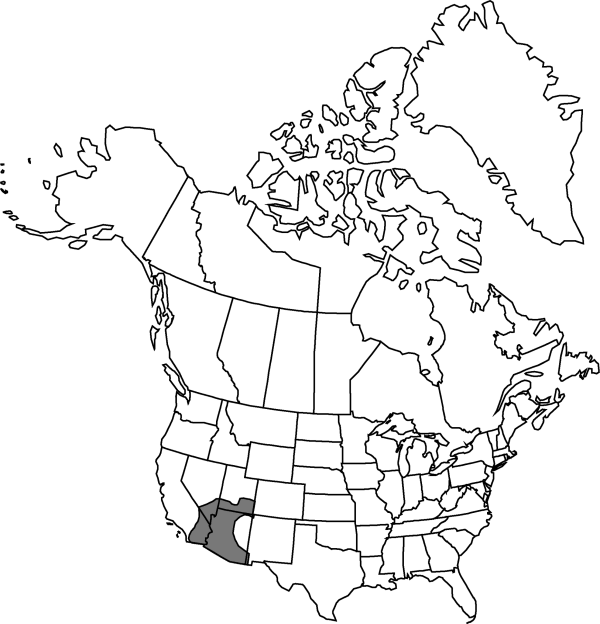Allionia incarnata var. villosa
Man. S. Calif. Bot., 598. 1935.
Basionym: Wedelia incarnata subsp. villosa Standley Contr. U.S. Natl. Herb. 12: 333. 1909
Treatment appears in FNA Volume 4. Treatment on page 60.
Inflorescences: peduncle 15–25(–30) mm, usually glandular-puberulent, densely spreading villous; flower cluster 20–25 mm diam. in anthesis; abaxial perianth limb 10–15 mm. Fruits 4–6 mm.
Phenology: Flowering early spring–late fall [year-round].
Habitat: Open arid areas, usually on sandy or gravelly soils, 100-1200 m
Distribution

Ariz., Calif., Nev., N.Mex., Utah, Mexico (Chihuahua, Sonora).
Discussion
B. L. Turner (1994) distinguished three varieties based primarily on perianth and fruit size. The robust, large-flowered var. villosa, intergradient with var. incarnata, is conspicuous in the field in its extreme, but difficult to distinguish on many herbarium specimens if geographic origin is unknown. This large-flowered variety is occasionally immediately sympatric with small-flowered phases of var. incarnata.
Selected References
None.
Lower Taxa
None.